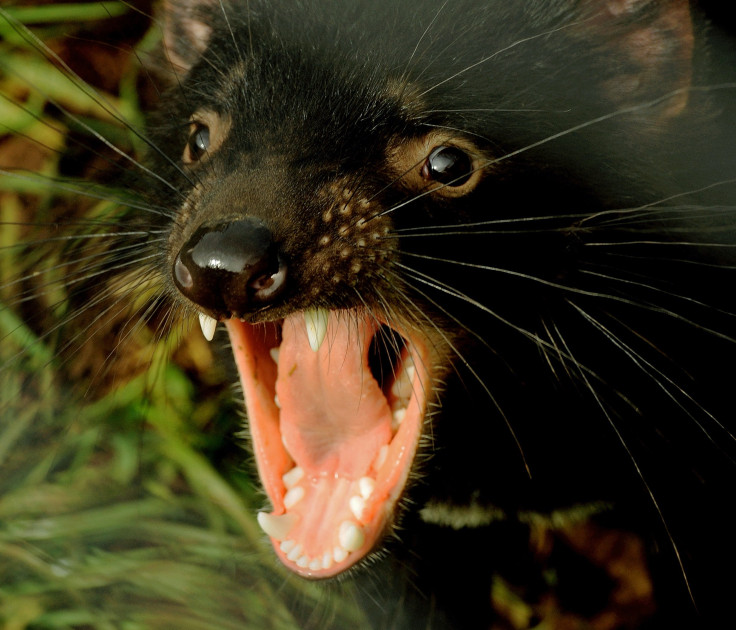Endangered Tasmanian Devil Might Be Saved From Extinction, Thanks To Cancer-Free Counterparts

Scientists discovered a healthy colony of Tasmanian devils in a breakthrough finding that could save the endangered species from the cancerous disease which has been driving them towards extinction.
The discovery, made on the south-west coast of the island, includes as many as 14 devils aged between 18 months and five years. Though the number is still very small, the important aspect is that all discovered marsupials are in good condition and free from the contagious Devil Facial Tumor Disease or DFTD.
For years, the infectious disease has been spreading like fire, claiming lives of devils one after the other. It spreads when an infected devil mates or bites an uninfected one. As cancer cells pass on, the infected devil develops a tumor which destroys its jaw bone and takes away its ability to see, ultimately leading to death in a matter of months. According to an Independent report, their populations have fallen by more than 80% ever since the disease first came into notice in 1996.
The expedition that led to this find was a crowd-funded effort from the Save the Tasmanian Devil Program (STDP), the University of Sydney (USYD) and Toledo Zoo in the U.S.
“The devils we caught are likely to have a large home range,” Sam Fox, who led the eight-day long search, said in a statement from the Tasmanian government. “They are having to travel long distances along the coast to find food and are moving backward and forwards as they forage for protein.” For instance, this may include washed-up whales or seals.
Stressing on the varying ages of the recently discovered devils, Sam said the find suggests the devil population in that area is small but healthy. This is “a good sign to show the disease is not present as we just don’t trap devils as old as these in areas of the State where DFTD is found,” the researcher added.
That said, monitoring these devils in isolation and using other data such as their scat and eye tissue samples, could be the key to saving them. Scientists at the University of Sydney are currently studying the findings to gain new insight and reveal genetic differences between the select healthy candidates and the ones roaming around Tasmania being infected.
"Facial tumour disease travels from devil to devil through the landscape and clearly in the past devils did get through there," David Pemberton, STDP manager, told ABC Australia. "It is very isolated geographically with terrain that devils tend not to cross. So to date, it hasn't happened and with any luck, it might not."
"But at least we're prepared now to get that genetic diversity out before it does get there," he added.
© Copyright IBTimes 2025. All rights reserved.




















